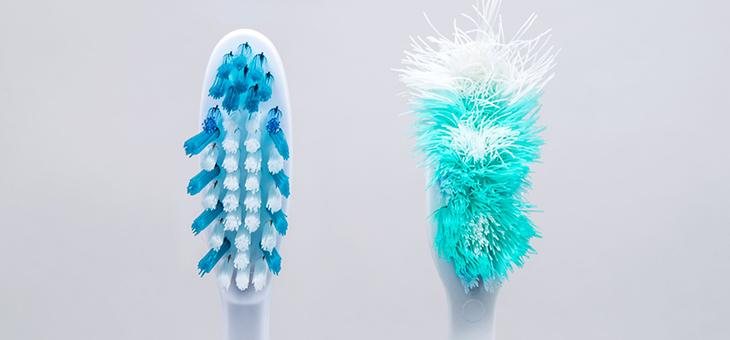We’re probably all guilty of using the same toothbrush for a bit too long, and it can be hard to know exactly when they’ve come to the end of their lifespan.
You might be surprised to find out that, according to manufacturer guidelines and dentist recommendations, your toothbrush should be replaced every 12 to 16 weeks.
There are also cases when you might need to replace your toothbrush sooner. If you don’t replace a toothbrush or electronic toothbrush head when it’s worn out, it can affect your dental health and spread infection.
So how often should you switch things up? We asked orthodontist Dr Chaw-Su Kyi to explain.
Toothbrushes can quickly get grimy with old toothpaste. Do we need to clean them and, if so, how often?
“As a rule of thumb, you should always clean your toothbrush after using it. This is as easy as running the brush under water to remove any residual toothpaste or any particles of food that may be left on the bristles.
“I advise leaving the brush standing to air dry naturally afterwards. Don’t cover your wet brush with a holder as this is how germs can potentially harbour.”
Read more: Dental experts tells what happens to our teeth as we age
What’s the best way to clean a toothbrush?
“The best thing is to simply rinse it straight away with running water after using it. However, you can also give it a deeper clean every few weeks by swirling the toothbrush head in a cup of mouthwash, for around 30 seconds.

“For a DIY cleaner, you could also try using denture tablets dropped in water. They are traditionally used to disinfect dentures that have a plastic component and can be safely used on toothbrushes. Make sure you’re always following the instructions though.”
How often should I replace my toothbrush or toothbrush head?
“Ideally every three months, or sooner if the bristles are fraying considerably. As a general hygiene rule, look at changing your toothbrush around four times a year.”
If you follow the standard recommendation of brushing your teeth for two minutes twice per day, you’re already taking steps to protect your teeth from cavities. Brushing your teeth between each meal and after a sugary snack is an extra step you can take.
Read more: The perfect travel toothbrush
Brushing two or more times per day is considered standard for a manual toothbrush. At this rate of use, the bristles in your brush will start to fall out and become mangled or twisted within about three months.
Once the bristles in your toothbrush start to lose their stiffness, the toothbrush is ready to be replaced. Without bristles that brush aside food and plaque, your toothbrush quickly loses its efficiency.
Can neglecting to change my toothbrush make me sick?

“Germs and micro-organisms can harbour on your toothbrush if it’s not cleaned, but there’s no clear-cut evidence that it will make you unwell.
“However, I think it’s all part of having a clean hygiene routine. You wouldn’t consider wearing the same dirty clothes every day for a year, so there’s no reason to not rinse your brush with water after using it, or to forget replacing it every three months.”
Read more: Germ hotspots in your home and how to banish them
If you or a family member have been sick, it’s a good idea to replace your toothbrush as well as the toothbrush of everyone else in your household.
Viral and bacterial infections are of particular concern and are a good reason to switch your old toothbrush for a new one.
Don’t share your toothbrush with someone else, even members of your immediate family. If your toothbrush is stored in a cup or container with other toothbrushes, try not to let the heads touch each other.
How often do you replace your toothbrush? How do you remember to do it? Leave your suggestions in the comments.
– With PA
If you enjoy our content, don’t keep it to yourself. Share our free eNews with your friends and encourage them to sign up.

